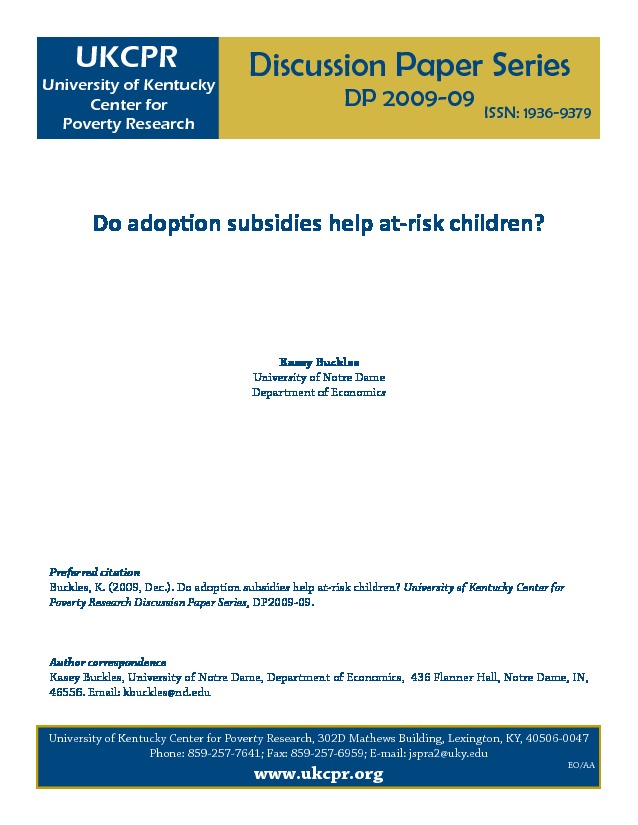More than half a million children in the United States are currently in foster care, many of whom are at risk for long-lasting emotional and health problems. Research suggests that adoption may be one of the more promising options for the placement of these children. The Adoption Assistance and Child Welfare Act of 1980, which provided federal funds for monthly adoption subsidies, was designed to promote adoptions of special-needs children and children in foster care. Using data from the Adoption and Foster Care Analysis and Reporting Systems for 2000- 2006, I consider the effects of these adoption subsidies on children’s likelihood of being adopted, on time spent in foster care, and on the characteristics of adoptive families. Because subsidies may be determined endogenously, I employ an identification strategy that exploits state variation in the age at which children are eligible for federal subsidy funds. I find that foster children who are eligible for subsidies are more likely to be adopted, and that eligibility increases the hazard of discharge from foster care. Conditional on adoption, higher expected subsidies increase time to adoption finalization and increase the probability that a child is adopted by a relative such as a grandmother.
Research
PovertyPDF Thumbnail
